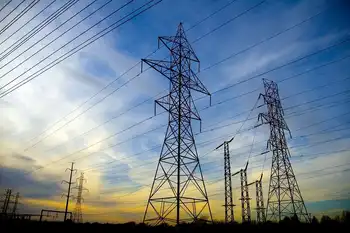China taps Honeywell to develop smart grid
The project is part of a grant agreement signed today between the U.S. Trade and Development Agency USTDA and State Grid Electric Power Research Institute SGEPRI, sponsor of the project and a subsidiary of State Grid Corp. of China.
The pilot will center on HoneywellÂ’s smart grid technology and expertise, including automated demand response, advanced energy management and submetering. The company will help connect State Grid and its customers to manage energy supply and demand, automatically adjusting electricity consumption and reducing strain on ChinaÂ’s utility infrastructure. This is especially important in commercial and industrial facilities, which account for 70 percent of worldwide electricity use.
The demonstration will allow SGEPRI to assess the feasibility of broader deployment of smart grid solutions, and support the development of standards and regulations. The institute will also examine the opportunities and challenges businesses face in linking their energy- and demand-management efforts with an increasingly dynamic electrical grid.
“We’re honored to partner with State Grid to demonstrate the economic benefits of smart grid technologies that help manage the demand for electricity,” said Shane Tedjarati, president and chief executive officer of Honeywell China and India. “Honeywell is one of the only companies with technology that lets utilities broadcast signals to alert customers when energy use spikes and outpaces the ability to generate power. We also have relationships with commercial and industrial enterprises throughout China, and can help them define and automate their responses to those demand signals.”
The grant agreement stems from the China-U.S. Energy Cooperation Program ECP, an initiative started by USTDA and the National Energy Administration of China to spur joint business development in the clean energy sector.
A smarter electrical grid will help China manage the growing demand for energy, and improve the reliability and efficiency of the countryÂ’s utility infrastructure by allowing electrical consumers to better manage how and when they use their energy based on availability and cost. It will also allow broader integration of renewable energy sources, such as wind and solar, and help residents, businesses and industry better control costs and be more energy efficient.
“Residential and industrial electricity customers and grid operators are forming important new relationships across China. Honeywell has a proven track record of working with both utilities and their customers around the globe, giving it a unique perspective on how to quickly realize the benefits of the evolving grid,” commented Mr. Shijie Xiao, president of SGEPRI.
“Implementation of this pilot project will expose us to the latest solutions and help identify the most suitable technologies for China. The demonstration is expected not only to provide the first-hand and real-time data for a feasibility study to deploy demand response in the smart grid in China, but also to support the promulgation of relevant regulations and standards.”
With controls in 150 million homes, 10 million buildings and thousands of industrial sites, and experience managing demand response and efficiency programs for more than 100 utilities, Honeywell has the offerings and experience to empower smart energy users. The companyÂ’s technology and services are at the heart of smart grid projects reducing both day-to-day and peak electricity consumption. For example, Honeywell has helped give utilities combined control of more than 1 gigawatt of peak load, which is equivalent to the generation capacity of approximately 20 gas-fired peaking plants.
Related News

Website Providing Electricity Purchase Options Offered Fewer Choices For Spanish-speakers
DALLAS - The state’s Public Utility Commission has ordered that the Spanish-language version of the Power to Choose website provide the same options available on the English version of the site.
Texas is one of a handful of states with a deregulated electricity market. The ides is to give consumers the option to pick power plans that they think best fit their needs. Customers can find available plans on the state’s Power To Choose website, or its Spanish-language counterpart, Poder de Escoger. In theory, those two sites should have the exact same offerings, so no one is disadvantaged. But the Texas…





